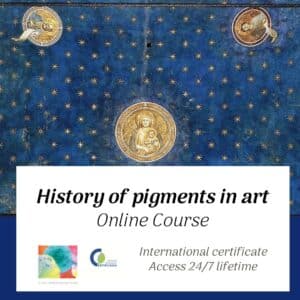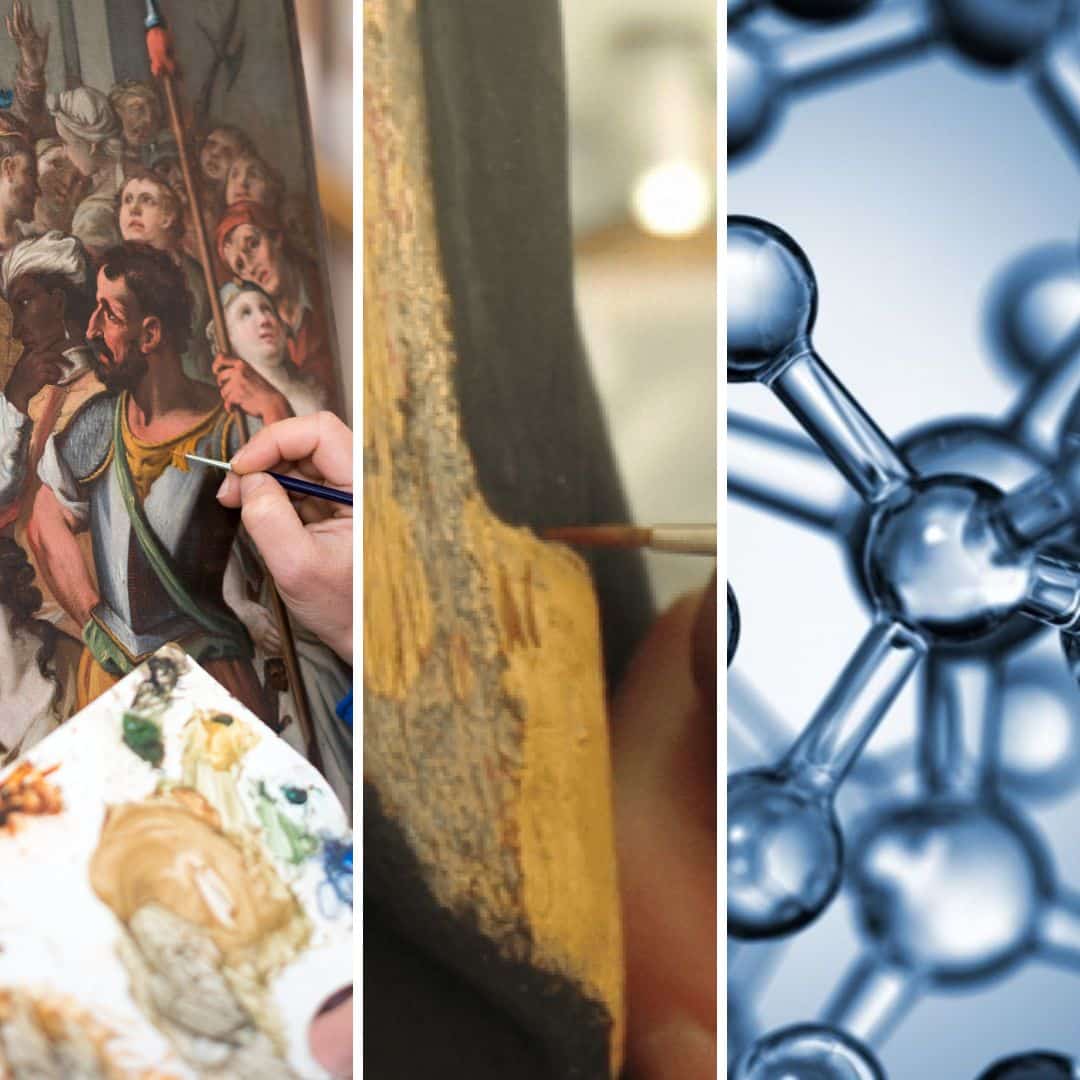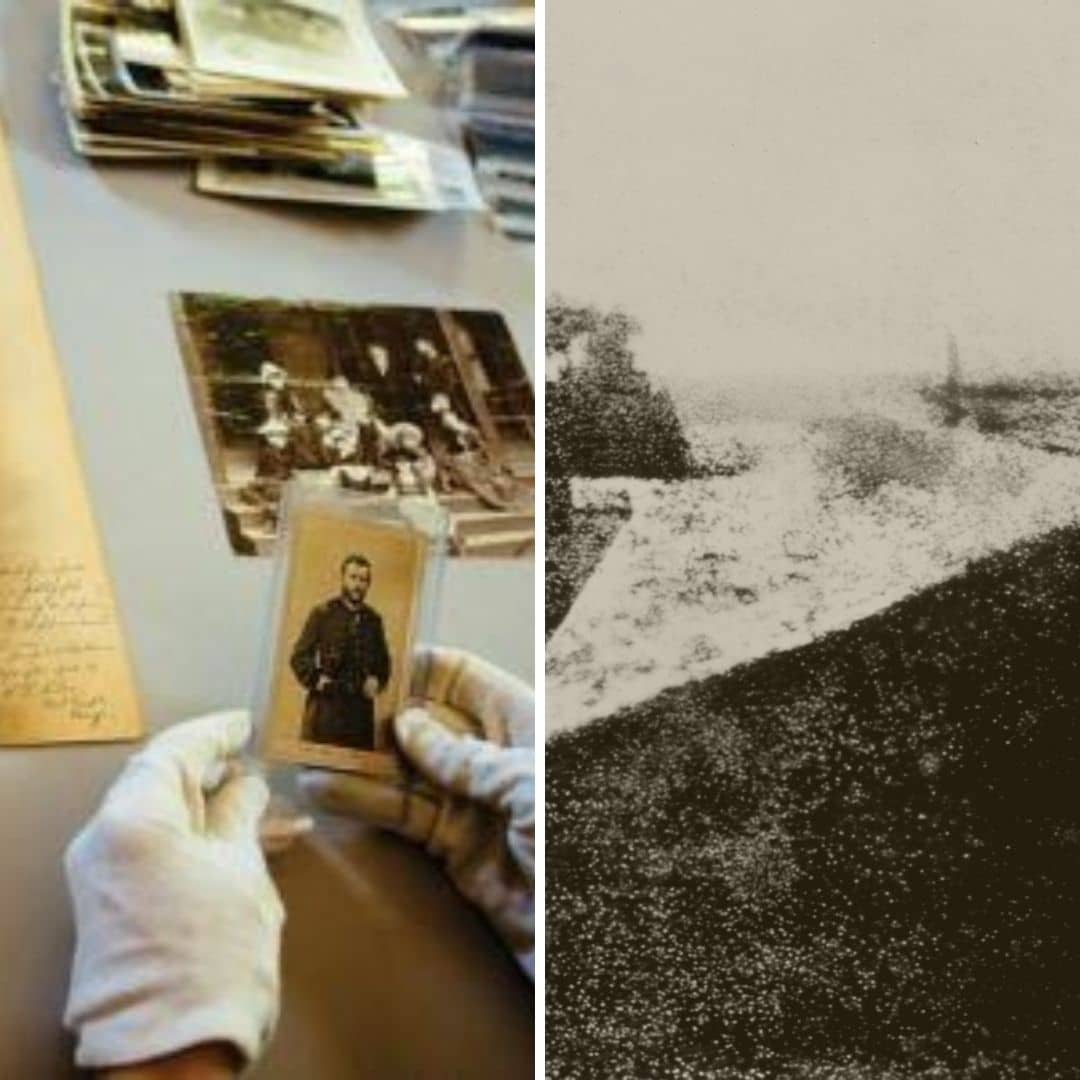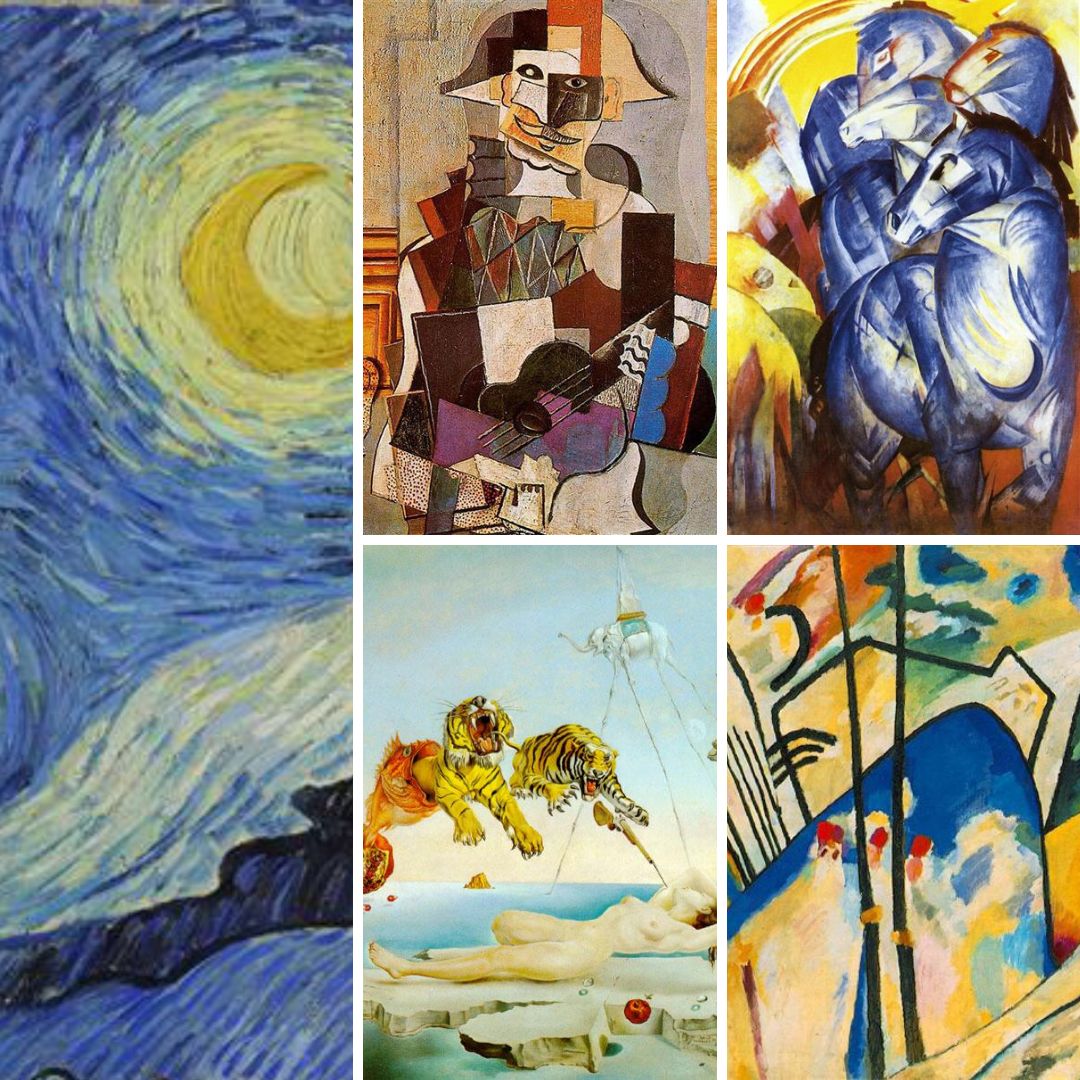Pigments – those tiny particles that give color to works of art…
In this 2 course bundle you will learn about pigment from 2 different but complementary perspectives: the art history aspect and the use of color in different time periods, styles and artists; and the research aspect, analyzing their physical and chemical characteristics and their alteration processes.
SAVE 35% ON THIS COURSE PACKAGE
Language: English
Also available in Português | Spanish


The price of the package of 2 certified online courses includes 24-hour access for an unlimited time:
Lessons for each topic in the program
Links to articles, videos and websites
Assessment (1 final quiz per course)
Certificate (1 certificate per course).
Objectives
A pigment is a small particle of color, of natural or synthetic origin, which, when mixed with a “medium”, give color to works of art from prehistoric times to the present day.
Their use throughout history is linked to geographical, social and status aspects, etc. It reflects artistic styles and movements and reveals the palettes of artists and their mastery of color.
But they are also elements with specific physical and chemical characteristics that react differently to environmental conditions and interact with the other elements present in a work of art.
That’s why we’ve created this package of 2 courses which, by looking at pigment in different ways, complement each other so that you can analyze and understand this fundamental element of art – the Color.
Who should take these 2 online courses
They are particularly suitable for:
Historians, art historians and students and teachers in these areas.
Conservators, restorers and students in the field.
Curators, artists, museologists, gallery owners.
Teachers, cultural agents, etc.
There are no entry requirements.
Certificate
How it works
Pigments in art restoration and research
Topic 1 – Introduction
1 – General characteristics
- Types and origin
- Structure and granulometry
- Optical and physical properties
- Chemical properties
- Chemical reactions that give rise to pigments
- Examples of chemical elements used in the production of artistic pigments and how they tend to behave when they are pigments.
Topic 2 – Pigments as artistic material
2.1. Manufacturing process.
2.2. The composition and its importance in artistic creation
2.3. Compatibility with the other materials that integrate a work of art
Topic 3 – Restoration and conservation of pigments
1. Restoration
1.1. Degradation factors and main pathologies
1.2. Overview of pigments and techniques used in the restoration of works of art.
2. Conservation
2.1. The importance of preventive conservation in the preservation of pigments.
2.2. Methods and materials for their protection
2.3. Ethical and legal considerations in their conservation
Topic 4 – The use of pigments in the research and dating of works of art
4.1. The use of pigments as chronological indicators (brief historical overview)
4.2. Techniques, style and materials as a chronological indicator
4.3. Limitations and considerations in the use of pigments for dating works of art
History of Pigments in Art
Unit 1 – Introduction to pigments in art
1 . Definition and characteristics
2. Pigments and society
2.1. Relationship with religion
2.2. Relationship with popular culture
2.3. Relationship with social markers, hierarchy and status
2.4. Relationship with politics and the economy
2.5. Relationship with work
3. Theory of color
Unit 2 – Prehistory and Antiquity
1. introduction to the first pigments: prehistoric pigment and their use in rock art
2. Antiquity
2.1. Egyptian art
2.2. Greek art
2.3. Roman art
Unit 3 – Middle Ages, Renaissance and Baroque
3.1. In the art of the Middle Ages
3.2. In Renaissance art
3.3. In Baroque art
Unit 4 – The pigments of the mid and late 18th century. The pigment revolution of the 19th and 20th centuries.
4.1. The mid and late 18th century
4.2. The 19th century
4.3. Evolution of pigments during the 20th and 21st centuries. New vision of art and its impact on new pigments and techniques.
4.4. Final conclusion and some curiosities and links of interest for the study of the history of pigments in art




